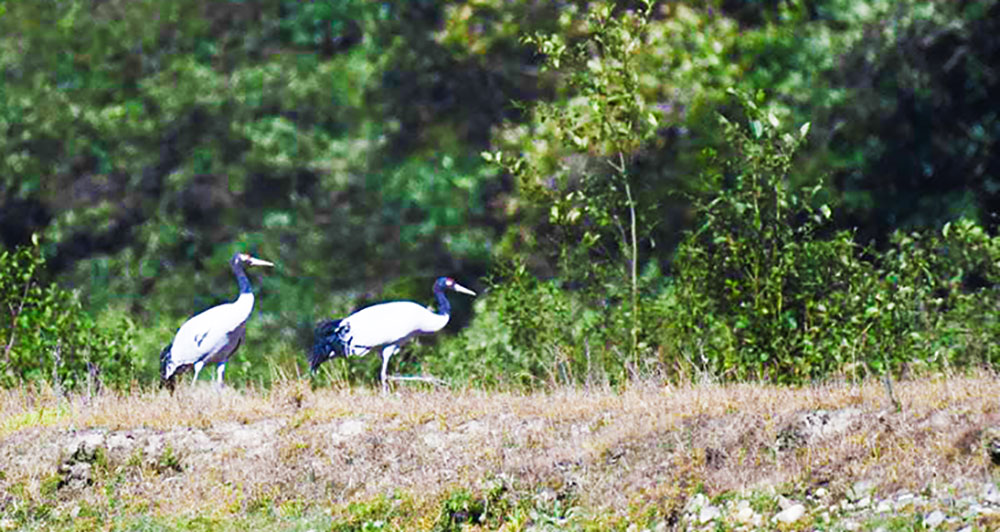Chhimi Dema
Six Black-necked Cranes (Grus nigricollis) returned to Bhutan for their wintering this year in the past few days.
Four BNCs (two adults and two juveniles) arrived at Phobjikha on November 4 and two cranes arrived in the Bumdeling Wildlife Sanctuary on November 7.
Every winter the cranes roost at Phobjikha and Khotokha in Wangdue; Bumdeling and Yangtse in Trashiyangtse; Chokhhor, Chumey and Tang in Bumthang; and Dungkar and Tangmachu in Lhuentse.
The cranes fly from various parts of China and Arunachal Pradesh to Bhutan every winter.
Records with the Royal Society for Protection of Nature (RSPN) show that the highest number of cranes in the country is seen at Phobjikha and Bumdeling.
Last year, 599 BNCs were recorded in the country. The highest was seen at Phobjikha with 468 cranes followed by Bumdeling with 65 cranes.
The presence of cranes indicates a sound and pristine environment. Locals of Bumdeling, before the modern development, looked at the behaviours of the cranes to decide the time for their work in the field.
The locals referred to the bird as ‘Maanchod paku bleymi’ which means the cranes flying to the river to feed and are considered workers of the people in the lower valley of Bumdeling. This was when the farmers would go to the fields. When the cranes returned to their roosting sites, it was time for the farmers to rest for the day.
RSPN on their Facebook page wrote that the number of species will gradually increase in the coming days.
“The species will spend around four months in Bhutan with most species returning by February month of the year to their summer breeding ground,” the post stated.
To promote community support in conserving the crane, RSPN initiated the Annual Black-necked Crane Festival in 1998. The festival will be held in November 11 this year.


